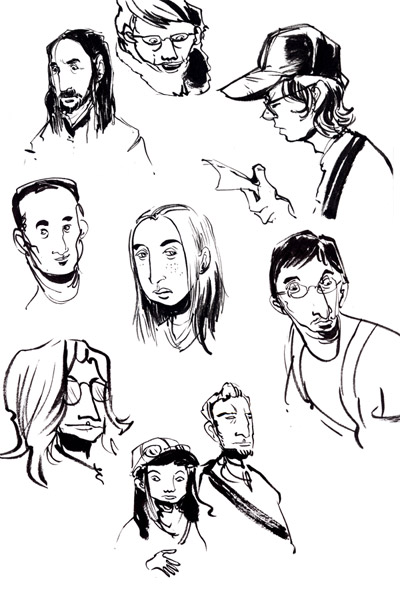 Drawing people is something that every animator better know how to do and not just stick figures either. Animators must be able to draw people doing all kinds of things such as riding a bike, playing a sport, driving a car, or even walking or jogging. In fact, nearly every animation that has people in it will have the characters walking. Before you can set this into the computer to get the animation working, you'll need to have drawings to put that into the CADCAM software to help you grid it out.
Drawing people is something that every animator better know how to do and not just stick figures either. Animators must be able to draw people doing all kinds of things such as riding a bike, playing a sport, driving a car, or even walking or jogging. In fact, nearly every animation that has people in it will have the characters walking. Before you can set this into the computer to get the animation working, you'll need to have drawings to put that into the CADCAM software to help you grid it out.This means you will have to sketch your character, in different positions while they are walking. You'll need a new sketch for each point of contact such as a foot touching the ground as your anchor sketches and then a few sketches in between. Once you do this you can set the parameters, and the computer will do the rest. If you've ever studied people walking or just sat in a coffee shop and watched people walk by out the window, you will notice quite a few interesting things.
 People will swing their arms a certain way, and then move laterally to go around an object, thus, drawing a couple holding hands, or someone walking a dog adds more complications to your animation. However, if you will keep in mind the need to draw your anchor sketches each time a foot hits the ground, or in the case of walking the dog a paw, you'll be able to make all this happen.
People will swing their arms a certain way, and then move laterally to go around an object, thus, drawing a couple holding hands, or someone walking a dog adds more complications to your animation. However, if you will keep in mind the need to draw your anchor sketches each time a foot hits the ground, or in the case of walking the dog a paw, you'll be able to make all this happen.
Remember when you have a dog walking with a human you now have six legs and six points of contact. A small dog will touch the ground many more times between each step of the human, sometimes at the same time and sometimes not. And you cannot cut corners by having them walking in lock step, it will not look real.
Drawing sequential sketches is a necessity of a good animator, and until you can do that it really doesn't matter how well you can run the software, because you can never make it in the business until you can do both. Please think of all this.
References:
 "The Animator's Survival Kit; a Manual of Methods, Principles, and Formulas for Classical, Computer, Games, Stop Motion and Internet Animators" by Richard Williams (director of animation "Who Framed Roger Rabbit"), Published by Faber and Faber, New York; 2001. ISBN: 0-571-21268-9
"The Animator's Survival Kit; a Manual of Methods, Principles, and Formulas for Classical, Computer, Games, Stop Motion and Internet Animators" by Richard Williams (director of animation "Who Framed Roger Rabbit"), Published by Faber and Faber, New York; 2001. ISBN: 0-571-21268-9
And
"3D Graphics & Animation; from Starting Up to Standing Out," by Mark Giambruno; New Riders Publishing; Indianapolis, IN; 1997. ISBN: 1-56205-698-0
Tidak ada komentar:
Posting Komentar